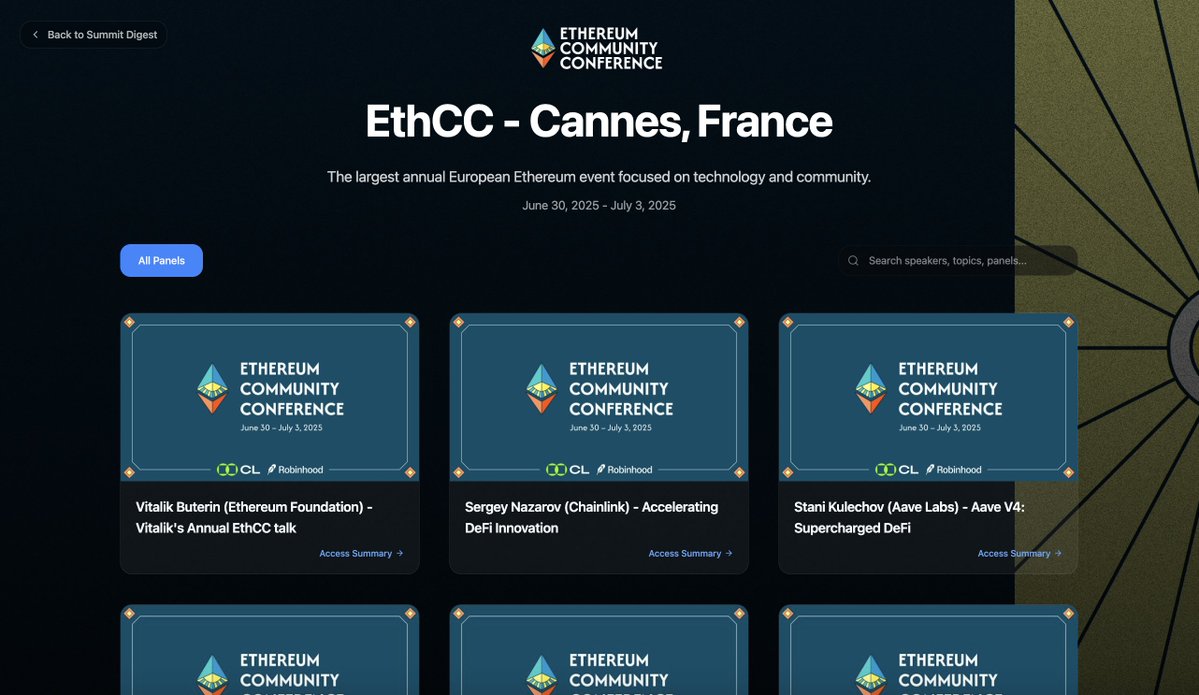From IPOs to acquisitions & more, TradFi is embracing stablecoin tech at record pace.
Stable Summit, the leading dedicated stablecoin conference, took place last month in Cannes.
Our Summit Digest tool is here to provide the key insights & takeaways👇
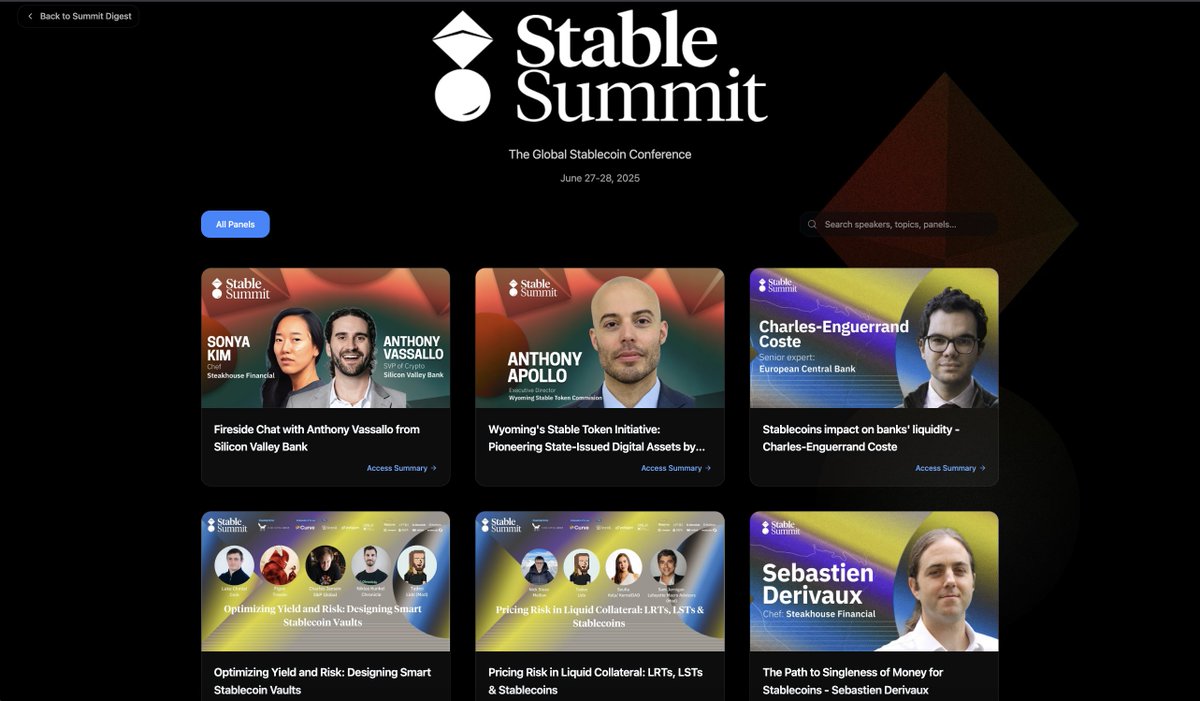
Summit Digest summarizes conference panels & provides bite-sized actionable insights.
Check out our previous EthCC coverage👇
"The World of Stablecoins Post-GENIUS ACT" - @Benjamin918_, Founder @capmoney_
Key Takeaways:
- Regulation Sets the Bar: The GENIUS Act confines U.S. payment stablecoins to fully reserved, non-yielding tokens issued only by “qualified” entities.
- Immediate Compliance Gap: Most decentralized yield-oriented or undercollateralized stablecoins will become off-limits for American users.
- Corporate Wave Incoming: Walmart, Fidelity, BlackRock, and Franklin Templeton are preparing branded dollars, signaling rapid market fragmentation
- Margin Compression Risk: An oversupply of nearly identical coins will drive fee revenues toward zero unless issuers add complementary businesses.
On the GENIUS Act:
- Benjamin outlines how the bill formalizes best practices - full collateral, daily redemption, and creditor subordination, yet draws two bright red lines: no retail yield and no unregulated issuers.
- The hack-and-launch era is effectively over. Entry now demands bank-grade compliance, sharply raising costs and thinning the field to capitalized players or fully autonomous protocols.
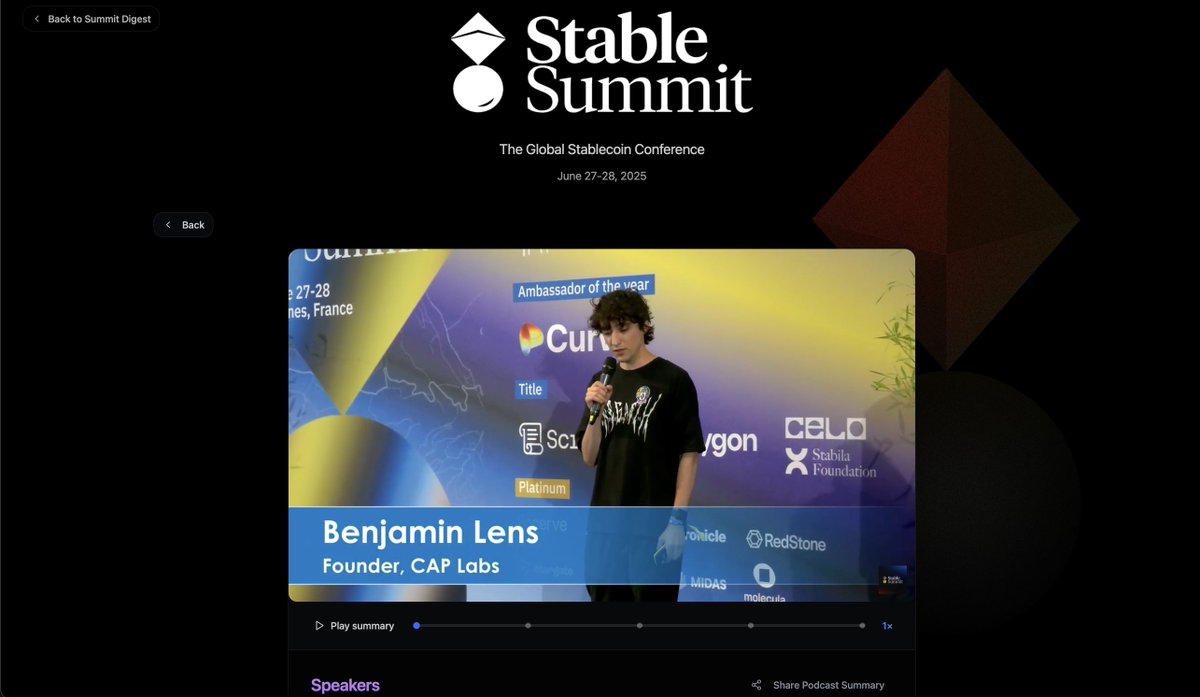
"Chronicle: Tokenized Assets & The Oracle Problem" - Niklas (@nomos_paradox), Founder @ChronicleLabs
Key Takeaways:
- Tokenization Hits Escape Velocity: Real-world assets on chain jumped from USD 5 billion in 2022 to USD 24 billion today, outpacing overall DeFi growth.
- Private Credit Leads, Not Treasuries: At USD 14 billion, private-credit tokens nearly double the USD 7.5 billion in tokenized Treasuries, challenging the narrative that bonds dominate issuance.
- Breakneck YTD Growth: Flagship tokens such as BlackRock’s BUIDL, Superstate’s USTB, and Ondo’s OUSG have grown 270-340 percent year-to-date; Maple’s Syrup-USDC pool is up 204 percent and PAXG is up 70 percent.
On Risk Management and Oracle Innovation:
- Tokenized assets are not crypto-native; they are wrappers whose backing sits off-chain.
- Without granular, near-real-time reserve data, protocols cannot write robust liquidation or concentration logic. Kunkel warned that a single opaque position could render a major protocol insolvent, citing past losses triggered by the Alameda collapse.
- Chronicle Protocol aims to close this gap by sourcing data directly from custodians, cryptographically attesting to reserves, and publishing multi-factor feeds: price, NAV, maturity, and collateral composition to any chain with minimal gas overhead.
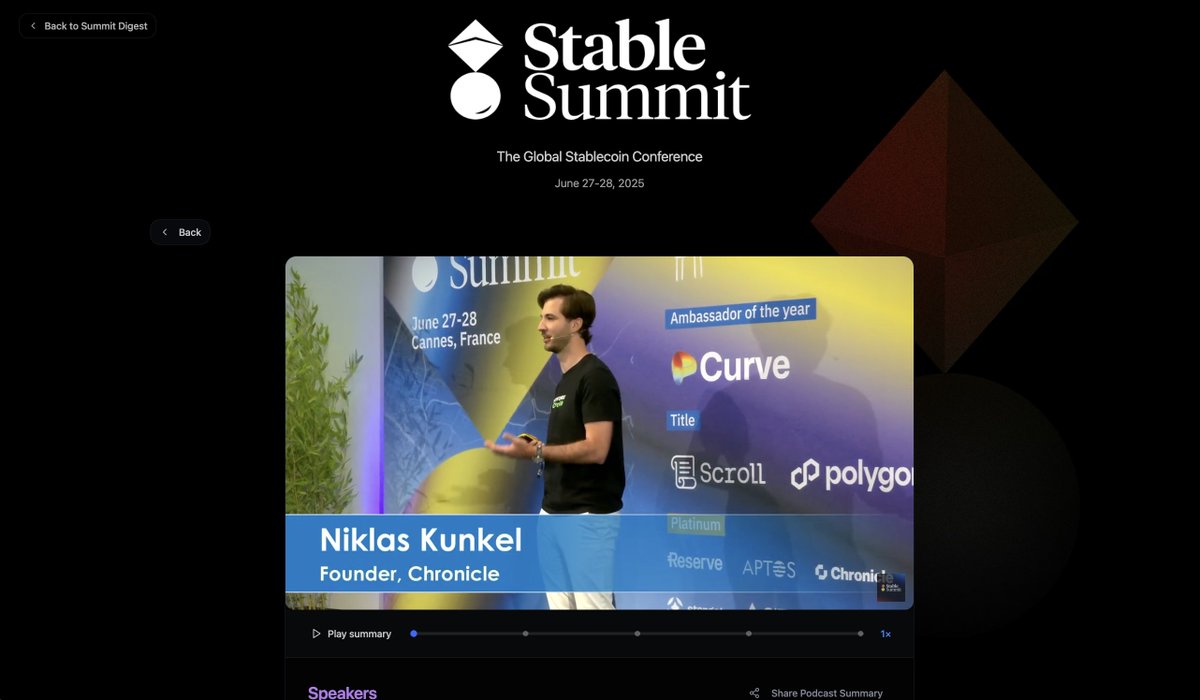
"From Stablecoins to Stable Currency" - @ivanhalen0x, Head of DeFi @reserveprotocol
Key Takeaways:
- Dollar Dominance Questioned: Ivan argues that because ninety-nine percent of stablecoins track the US dollar, they inherit its long-term inflation and cannot serve as truly stable currency.
- Asset-Backed Future: He predicts the next generation of stablecoins will be collateralized by diversified baskets of real and digital assets, not single fiat units.
- Decentralized Token Folios (DTFs): Reserve’s on-chain, permissionless index structures allow anyone to mint or redeem fully transparent, one-to-one backed baskets—functionally “ETF-grade” building blocks inside DeFi.
- Three Design Pillars: Diversification, open experimentation, and continuous evolution of the basket composition are positioned as the route to currencies that can appreciate alongside global GDP.
- Efficiency Over Collateral Waste: Unlike many over-collateralized decentralized stablecoins, DTFs aim for capital efficiency by holding productive, yield-bearing assets while avoiding single-issuer risk.
On Competitive Edge Versus ETFs & Existing DeFi Products:
- Traditional ETFs suffer from limited composability, restricted trading hours, and lengthy approval cycles for new themes.
- DTFs operate permissionlessly, enabling near-instant creation of thematic or strategy baskets.
- Compared with current decentralized stablecoins, DTFs strive for both transparency and capital efficiency, sidestepping the high capital costs of over-collateralized models.
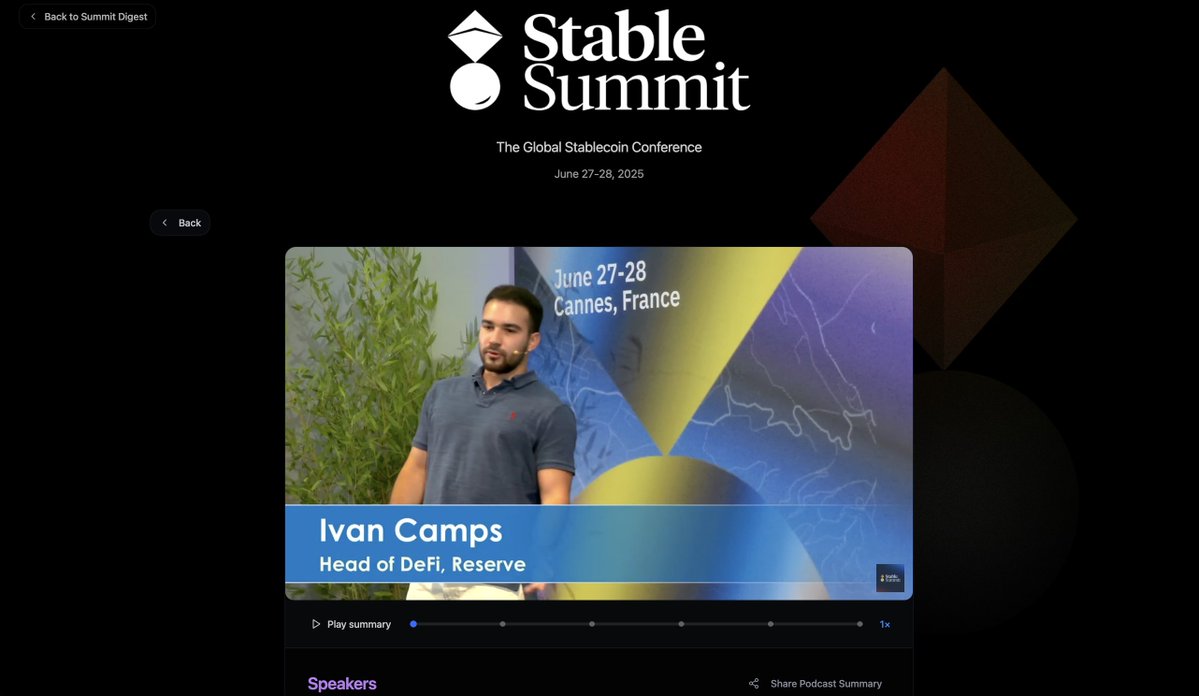
3.68K
16
The content on this page is provided by third parties. Unless otherwise stated, OKX TR is not the author of the cited article(s) and does not claim any copyright in the materials. The content is provided for informational purposes only and does not represent the views of OKX TR. It is not intended to be an endorsement of any kind and should not be considered investment advice or a solicitation to buy or sell digital assets. To the extent generative AI is utilized to provide summaries or other information, such AI generated content may be inaccurate or inconsistent. Please read the linked article for more details and information. OKX TR is not responsible for content hosted on third party sites. Digital asset holdings, including stablecoins and NFTs, involve a high degree of risk and can fluctuate greatly. You should carefully consider whether trading or holding digital assets is suitable for you in light of your financial condition.

